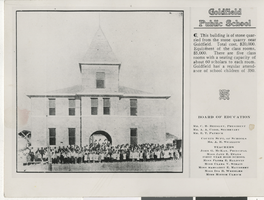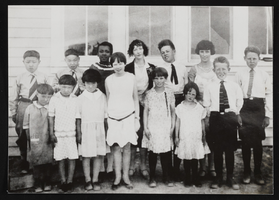Search the Special Collections and Archives Portal
Search Results
Walter V. Long oral history interview
Identifier
Abstract
Oral history interview with Walter V. Long conducted by Patricia Truman on October 19, 1972 for the Ralph Roske Oral History Project on Early Las Vegas. In the interview, Long discusses early buildings and communities around Las Vegas High School, as well as his experiences as a teacher and principal in Las Vegas, Nevada. Long also discusses his early life before coming to Las Vegas, family, education, politics, Boulder (Hoover) Dam, and the Old Las Vegas Mormon Fort.
Archival Collection

Transcript of interview with Lilly Fong by Annie Yuk-Siu Shum, February 29, 1980
Date
Archival Collection
Description
Text
Dr. Dolores Glick oral history interview
Identifier
Abstract
Oral history interview with Dr. Dolores Glick conducted by Roberta Threatt on November 29, 2003 for the Public School Principalship Oral History Project. In this interview, Dr. Glick reflects upon her career as an elementary and high school principal in New York. She discusses her transition from being an elementary school principal to being a high school principal, and the process by which she eventually became a guidance counselor for Nevada’s Clark County School District. She describes her regular responsibilities as principal, her approach to school administration, and her working relationship with teachers and parents. She also compares working in New York with working in Nevada, and discusses contemporary challenges within schools such as drugs and violence.
Archival Collection

Photograph of Goldfield Public School, Goldfield (Nev.), 1900-1911
Date
Archival Collection
Description
Image

Tomiyasu children in school portrait: photographic print
Date
Archival Collection
Description
Image
Kathryn Howell oral history interview
Identifier
Abstract
Oral history interview with Kathryn Howell conducted by Joyce Marshall on March 21, 2003 for the Ralph Roske Oral History Project on Early Las Vegas. In this interview, Howell discusses her early life in Texas and growing up on a ranch. She talks about her career as a teacher, teaching strategies she used, and the importance of classroom management.
Archival Collection



